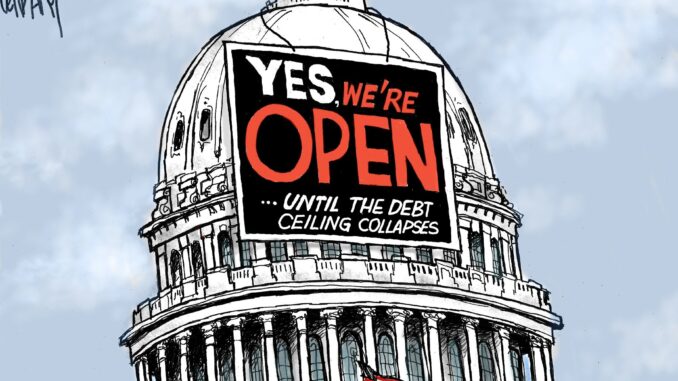
(Reuters) – Rising concerns that the U.S. Treasury Department could hit its debt limit in the coming months are leading investors to shun certain Treasury bills and pour into others as they seek out low risk places to park cash.
Congress will need to raise the U.S. debt ceiling or risk a catastrophic debt default, with analysts predicting the Treasury is most likely to run out of funds in July or August.
As a result, some investors are avoiding debt that comes due in this timeframe. But they are also seeking safe places to park cash. That has led one-month bill yields to tumble, and the spread between one-month and three-month bills to expand to its widest level since the one-month bills were introduced in 2001.
“You’re seeing this demand for the very front-end … and then the three- to four-month part of the bill curve is quite cheap because of these debt ceiling concerns,” said Subadra Rajappa, head of U.S. rates strategy at Societe Generale in New York.
“There’s a lot of cash on the sidelines. Money left the regional banking systems and made it to the larger banks and then from there to money market funds. Money market funds are the highest they’ve been and there’s a dearth of supply,” Rajappa added.
The failure of two regional banks, including Silicon Valley Bank in mid-March, has increased demand for Treasury bills on concerns about the safety of uninsured bank deposits. But the Treasury has cut its issuance of short-term debt as it bumps up against its debt limit.
“The market is nervous and is avoiding the debt ceiling issues and has unfortunately nowhere to go because bill supply continues to be cut,” said Gennadiy Goldberg, a senior interest rate strategist at TD Securities in New York.
Yields on one-month bills were last at 3.362%. after reaching 3.206% last Thursday, the lowest since Oct. 20. They are now trading around 130 basis points below the Fed funds rate, the largest gap since 2008.
Yields on three-month bills , meanwhile, have increased to 5.113%, and are holding just below a 22-year high of 5.318% reached on Thursday. The gap between one-month and three-month bills has widened to a record at around 175 basis points.
The Treasury is expected to increase bill issuance once the debt ceiling is raised. Until then, investors are also likely to continue to make use of the Federal Reserve’s reverse repurchase agreement facility, which is seeing daily demand of around $2.25 trillion.
Source: www.reuters.com
ENB
Sandstone Group



